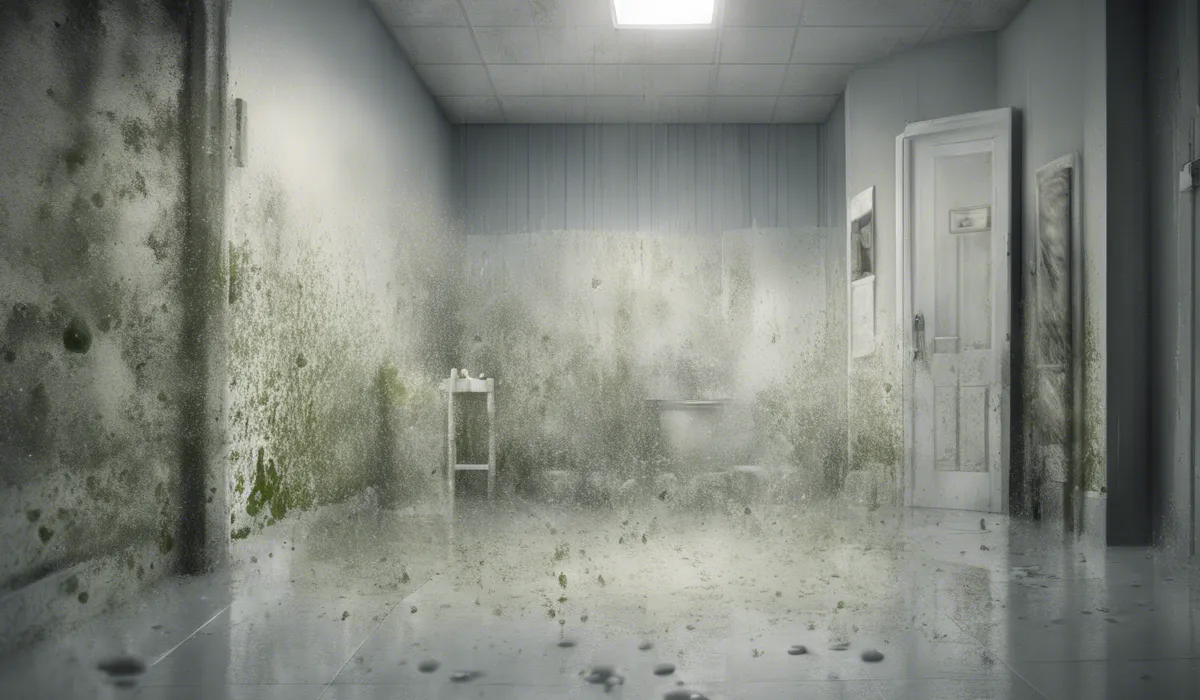Yes, some mold varieties can emit an odor reminiscent of urine due to ammonia production. This strong, musty smell is typically associated with mold growth in damp areas. If you detect a urine-like scent, it may indicate the presence of mold that should be inspected and remediated.
Understanding Mold and Its Common Odors

What Is Mold?
Mold is a type of fungus that can live both inside and outside. It is a part of the natural environment and plays a role in breaking down dead organic matter.
Molds reproduce by releasing tiny spores that float through the air. These spores can start growing into new mold growths when they land on surfaces that have the right conditions.
Conditions for Mold Growth
Mold needs certain conditions to grow. These include moisture, warmth, and food in the form of organic material like leaves, paper, wood, or fabric.
Areas that are damp, like bathrooms or basements, are common places where mold can be found. Leaks in roofs, windows, or pipes, and flooding can also create an environment suitable for mold to thrive.
Common Mold Smells
Mold often gives off a musty, earthy, or damp smell. This is usually the first sign that mold is present, even if you can’t see it.
The smell is caused by microbial volatile organic compounds (MVOCs) that are released during the mold’s growth and metabolism processes.
Factors Influencing Mold Odor
The type of mold, where it is growing, and what it’s growing on can all influence how the mold smells.
For example, mold growing on drywall may smell different from mold growing on carpet. The amount of moisture present and the stage of mold growth can also affect the smell.
Comparing Mold Odor to Urine Smell

Typical Urine Smell
Urine usually has a sharp, ammonia-like odor. This comes from the urea in urine being broken down into ammonia.
The smell can be stronger if the urine is concentrated, like when someone is dehydrated, or if it has been left to sit for a while.
Mold with Ammonia-like Smell
Some kinds of mold can produce an ammonia-like smell. This can happen when the mold is breaking down substances that contain nitrogen, such as urine from pets or even spilled fertilizers.
This process can release ammonia gases, which may lead to a urine-like odor.
Bacterial Activity and Urine-like Odors
When there is mold growth, bacteria can also be present. The bacteria can produce waste products that add to the smells of mold.
Sometimes, the combination of mold and bacterial activity can result in a scent that is similar to urine.
Perception of Smells
People are different in how they notice and describe smells. Some people might think a moldy smell is like urine, while others may not make that connection.
The ability to detect and describe odors can vary greatly from one person to another.
Addressing Mold Issues and Odor Concerns

Identifying Mold Sources
When you smell something musty or like urine in your home, it is important to find where it is coming from. Look for visible signs of mold in places that are likely to be damp.
Checking for water leaks or areas with poor ventilation can help you find hidden mold.
Professional Inspection and Testing
If you suspect mold but can’t find it, it may be time to call in a professional. They can do a detailed inspection and test for mold.
This is especially important if you have health concerns related to mold exposure.
Remediation Techniques
Once mold is found, it should be removed. Professionals can use various techniques to get rid of mold.
These might include cleaning the affected areas, using air scrubbers, and repairing any water damage. Removing mold correctly is important to prevent it from coming back and to get rid of the odor.
Preventative Measures
To prevent mold growth in the future, reduce moisture in your home. Use fans and dehumidifiers, fix leaks, and make sure your home is well-ventilated.
Keeping your home clean and dry will help stop mold from starting to grow again.
FAQs About Mold Odor
Can mold in your home smell like urine?
Yes, certain types of mold can produce a urine-like odor due to the presence of ammonia in their byproducts.
Why does mold sometimes emit a urine-like smell?
Mold can emit a urine-like smell because of ammonia production, which is a common byproduct of the fungal metabolism in some mold species.
What should I do if I smell a urine-like odor that might be from mold?
If you detect a urine-like scent that could be from mold, it’s advised to inspect for mold growth in damp areas and consider professional remediation if mold is found.
Is the urine-like odor from mold harmful to health?
The smell itself is not harmful, but it can indicate the presence of mold, which may cause health issues, especially in individuals with allergies or respiratory conditions.
How can I identify mold that smells like urine in my house?
Identify mold that smells like urine by looking for visible signs of mold in damp areas of your home and noting where the odor is strongest. A professional assessment may be necessary for accurate identification.
Final Thoughts
Certain molds can produce a urine-like odor due to ammonia, a byproduct of their growth. This musty smell is common in damp environments where mold thrives.
A urine scent in your home suggests a potential mold issue, warranting a professional inspection and appropriate remediation to ensure a healthy living space.
